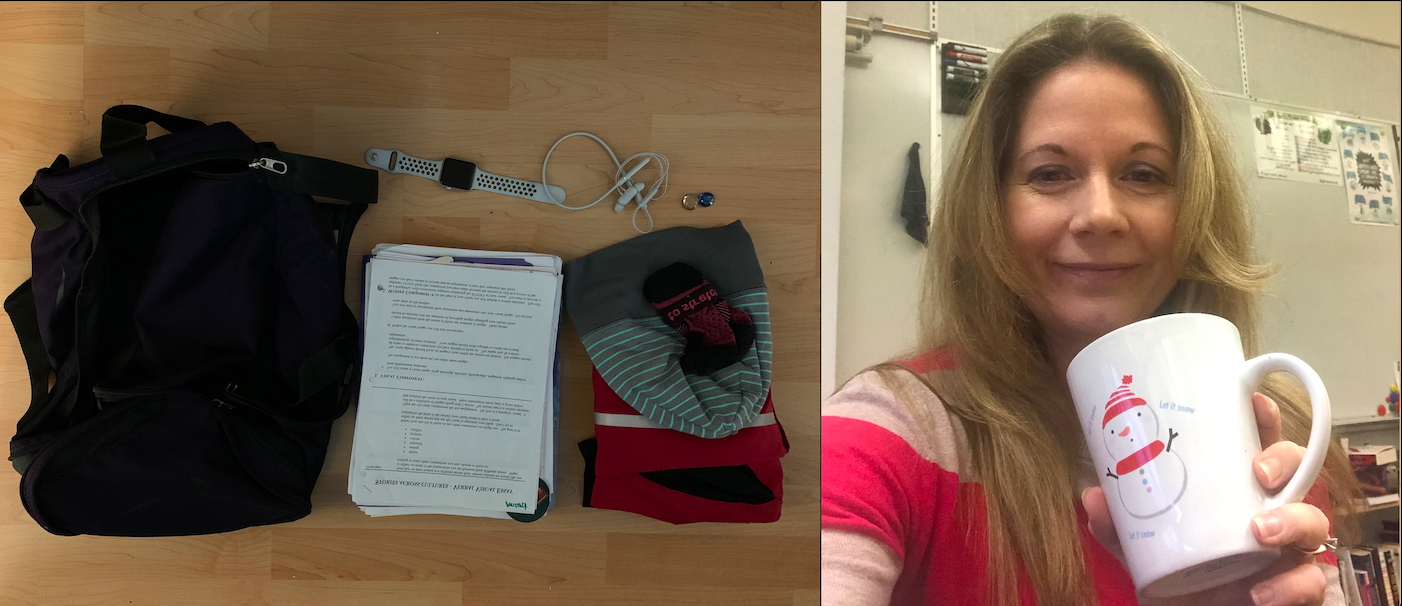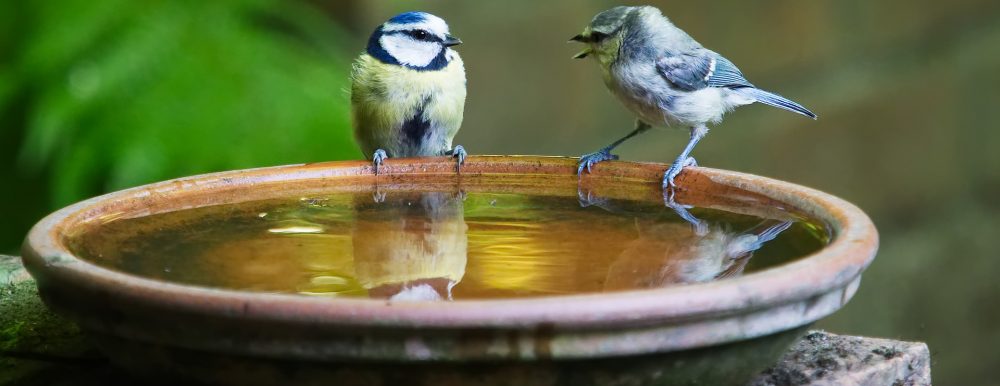
What’s In Your Bag?
For this task I decided to focus on my work bag, which contains items that I take back and forth from work to home on a daily basis. You will notice that I included a picture of my empty bag, as the current situation has meant I am now working from home and no longer need this bag. Reflecting on this led me to some interesting perspectives, which I will discuss later. The contents of my bag when I was using it reveal quite a bit about who I am. As a teacher it is rare that I leave the building without some marking, which is the stack of papers in the photo. Working from home is something I am used to, although the current situation clearly provides a whole other layer of complexity! The red jacket, toque, and socks are my essential gear for running. I always have these in my bag so if the weather doesn’t cooperate, I can still fit in my run after school. I don’t run every day, but if I commit to running it’s usually with a couple of colleagues, and we run rain or shine! While I’m usually wearing the Apple watch, I use it for tracking the pace and distance of my runs, and for music, and if it’s not on me it’s in my bag. The headphones allow me to escape and focus, and come in very handy if I’m running alone, or trying to concentrate while marking. The last items are the two marbles, which I found in the bottom of my bag. These likely fell out of my purse and were part of a tic-tac-toe game that I have on-hand to entertain my youngest when we are out for dinner or enjoying a local brewery! When I think about these items, they show that my life revolves around family, fitness, and work.
The items also connect to many ideas related to text and technology. One of the comments this week that I connected to was the idea that language becomes a technology in that it is an invitation to facilitate communication (Postman, 1992). In this sense the stack of marking is both text and technology. For this assignment students are asked to make connections between a selection of short stories. They are required to use text to explain their thinking but are encouraged to select creative visuals to represent their interpretations. The selection of images can be digitally produced, cut out of magazines, or hand-drawn, but they do “facilitate communication” and thus become a form of technology. Students must find a way to use both text and images to communicate their understanding.
The Apple watch is the most obvious example of technology in my bag. It has a seemingly endless number of functions designed to make communication easier and allow one to access all sorts of information instantly. What is revealing to me is that I find very little use for most of these functions! My husband gave this to me as a gift so I could run without my phone, and that is by far the function I use most frequently. My limited use of my watch may in part be because I’m reluctant to become too committed to technology that is so easily accessible. I am an example of the “extreme reactions” that are often linked to advancements in technology. I definitely can relate to feeling overwhelmed by the affordances of my Apple watch and want to maintain the ability to disconnect! As technology has increased the ability to interact with texts quickly and in such a wide variety of forms there have been both positive and negative impacts. How does language and communication through text fit into this discussion? One way is to think about how text is more than written language and has its roots in oral traditions. I loved the description of text as “woven words,” (1.5 Thinking About Technology) which is represented by how I can speak into my Apple watch, and it will take those words and transform them into text. Here is a true mingling of text and technology. So while I’m reluctant to get too committed to my watch, I do appreciate some of these benefits.
The headphones also led me to reflect on another aspect of advancements in technology and how they relate to text. Bluetooth technology has changed how we interact with our technology. Once restricted by wires or signals that constantly drop, this technology has advanced to a place where devices are connected at the touch of a button, just as we are all connected thorough the internet, social media etc. We are a society of instant gratification, which is reflected in how our technologies have evolved to meet these demands. As a result of the desire to connect and access information instantly, have we lost the ability to engage in deep conversations, to take the time to truly listen to each other? Does an emphasis on written over oral language, texting instead of talking, place limits on how we communicate? In some cases, I would say this is true. However, when I look at the empty bag, and reflect on the new learning landscape that is emerging amidst a pandemic, I am reminded how much we rely on communication technologies, and how adaptable we are to communicating in a variety of environments. For instance, I now use a Chat function on Microsoft Teams to regularly message students to check in with them, remind them about assignments, and answer questions. This is where text and technologies merge, and I find it interesting maintaining a somewhat formal tone in such an informal Chat environment. Even the word Chat elicits a different response than thinking about composing an email. I also consider the endless virtual meetings on Teams or think about my own children attending virtual lessons on a variety of platforms. This new world may lead to us reconnecting to our oral language in a new way. Whether it’s oral or written, the innovative ways people are using text to communicate, and the undeniable influence of technology, are certain to have lasting impacts on education and likely society in general.

Hey Helen,
I enjoyed working with you last term and getting to read more about you now! In addition to being Apple Watch twins (I have the exact same one!), I also agree with you on the extreme reactions and getting overwhelmed. Your insight into what might be on the horizon for our kids in the future really got me thinking more about the permanence of the situation or the changing way we might be required to look at schooling. I’ve been thinking about it as temporary, but your thoughts on language (oral, written) and technology got me thinking more about how we might be on the cusp of a ‘new way of doing business’. Gone are the days of playing ‘Oregon Trail’ off a floppy disk :). Looking forward to connecting with you again this term!
Thanks Valerie! I do really think this pandemic will have lasting impacts on education. I’m actually having my Grade 8 class reflect on different core competencies they have developed in adapting to this new way of learning. I’m interested to hear what they have to say, but I’m sure many of them will highlight the communication competencies. I’ll let you know what their reflections reveal!
Hi Helen! I really liked your questions; “As a result of the desire to connect and access information instantly, have we lost the ability to engage in deep conversations, to take the time to truly listen to each other? Does an emphasis on written over oral language, texting instead of talking, place limits on how we communicate?”
I think these are important questions to ask and I do believe that there are some limits that have been placed on the students that are coming up in the education system currently. They are creatures of this new digital age, where, yes, they are used to getting information or response immediately. I saw this most evident during our remote learning when I too was using the Google Chat for my students and if I didn’t respond right away, I would get constant messages asking if I was there, if I got their message, if I had an answer for them, etc. I found that they needed to really learn about patience during this time and also about making sure they could communicate exactly what it was they needed or were having trouble with. For example, just typing, “I need help,” doesn’t give me any information. We had to go over how to ask for help in an online environment and it will be interesting to see how students adapt to coming back into the classroom in the fall…will they continue to need instant gratification or will they have learned a little bit more about patience…food for thought! Thank you for a great post!
Hi Sasha,
I had such a similar experience! Kids would send me chat messages that didn’t really make sense or 1 word answers. It was so interesting to see them try to communicate in a casual chat forum, but about academic issues. I think it has been a valuable learning experience for all of us!